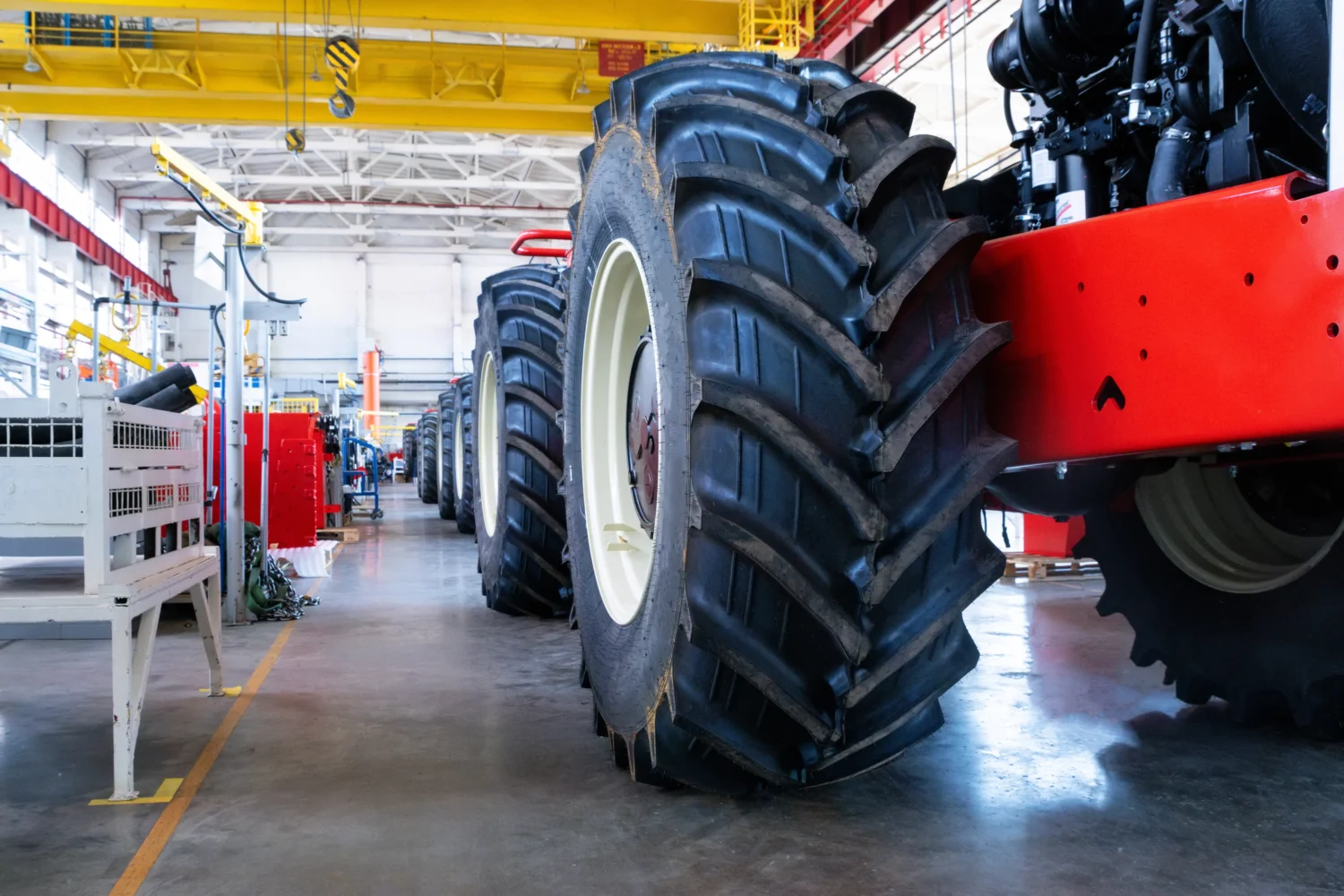Tires are the unsung heroes of vehicle safety and performance. They are the only point of contact between your car and the road, playing a pivotal role in how well your vehicle accelerates, brakes, and corners. Good tires can significantly enhance your car’s handling, making it safer to drive in various weather conditions. On the flip side, worn or unsuitable tires can lead to decreased grip and increased stopping distances, putting you and others at risk. That’s why understanding how to choose tires that match your driving needs and the conditions you face is crucial.
Selecting the Best Winter Tires

Key Features of Top-Performing Winter Tires
Winter tires stand out as a crucial investment for drivers facing harsh snowy climates, thanks to their specialized design tailored to cold weather conditions. Unlike all-season tires, winter tires are engineered with unique tread patterns and rubber compounds that remain flexible even in frigid temperatures, significantly enhancing traction on ice and snow-covered roads. The deeper tread depths and distinct biting edges, or sipes, ensure superior grip by effectively biting into slick surfaces, crucial for maintaining control and safety during winter driving. Moreover, these tires are designed to channel slush and expel water, reducing the risk of hydroplaning. By incorporating these key features, winter tires provide an invaluable advantage in maintaining stability, control, and safety for drivers navigating the challenging conditions of winter months, making them an essential selection for anyone looking to optimize their vehicle’s performance and safety in cold weather conditions.
Comparing Studded vs. Studless Winter Tires
When it comes to choosing tires for snow, the debate between studded and studless winter tires is significant. Studded tires have metal studs embedded in the tread, offering superior grip on ice. However, they can damage road surfaces and are banned in some areas. Studless winter tires, on the other hand, use advanced rubber compounds and tread designs to provide excellent ice and snow traction without the need for metal studs.
Top Picks for Winter Tires Based on Vehicle Type
Selecting the right winter tires depends on your vehicle type and your specific driving needs. For passenger cars, look for tires that offer a good balance of ice and snow traction and comfortable ride quality. SUVs and trucks might benefit from winter tires that offer enhanced durability and load-carrying capacity, in addition to excellent winter weather performance.
The Benefits of All-Season Tires
Understanding the Versatility of All-Season Tires
All-season tire benefits are numerous, making them a popular choice for many drivers. Designed to perform in a variety of conditions from sunny days to light winter weather, all-season tires offer a compromise between specialized summer and winter tires. This versatility means you can avoid the hassle of changing tires with each season, saving time and money.
Identifying Quality All-Season Tires: What to Look For
When choosing all-season tires, it’s essential to consider several key features that impact their durability, comfort, safety, and overall performance:

- Good Tread Life: Opt for tires renowned for their longevity, as they provide more mileage before needing replacement, ensuring greater value over time. A longer tread life means fewer tire changes and more consistent performance throughout the tire’s lifespan.
- Noise Reduction Technology: Select tires equipped with advanced noise reduction technology. These tires are engineered to lower the sound generated by road-tire interaction, leading to a significantly quieter and more comfortable ride, especially on long journeys.
- Enhanced Wet Traction: Give priority to tires that offer exceptional grip and stability in wet conditions. Superior wet traction is critical for safety during rain, reducing the risk of hydroplaning and ensuring reliable braking and handling.
Investing in quality all-season tires is a decision that enhances not just the versatility of your vehicle, but also its safety and the comfort of your ride. By focusing on these crucial attributes, you can select tires that support year-round driving excellence, ensuring your vehicle is equipped to face a variety of weather and road conditions with confidence.
Balancing Performance and Durability in All-Season Tires
The best all-season tires for your vehicle will depend on your specific driving conditions and needs. You want a tire that can handle a variety of road conditions while also lasting a long time. A good balance of silica in their tread compound tends to offer this balance, providing enhanced grip on wet road tires and longevity. Regular tire rotations and maintaining proper tire pressure impact can also extend the life of your all-season tires, ensuring you get the most out of your investment.
Off-Road Tire Selection for Adventure Enthusiasts
Features of Durable Off-Road Tires
For adventure seekers, off-road tire selection is critical for conquering tough terrains. Durable off-road tires are designed with reinforced sidewalls to resist punctures and tears, aggressive tread patterns for superior traction in mud, sand, and rocks, and deep tread depths to help eject debris. These features ensure your vehicle remains stable and capable, no matter the terrain.

Selecting Tires for Various Off-Road Terrains
How to select the right tires requires considering the specific terrains you plan to tackle. The demands of your favorite off-road adventures will guide you in making the best tires for rain or shine. Here’s a detailed look at what to consider for each environment:
- Muddy Conditions: In muddy environments, tires with wide and deep tread patterns are indispensable. These designs facilitate superior mud expulsion, preventing the accumulation of mud that can lead to a loss of traction. The wide gaps between tread blocks act as a self-cleaning mechanism, ensuring the tire’s surface remains clear for continuous grip. This feature is particularly beneficial in thick, sticky mud, where maintaining traction is paramount for navigating through without getting stuck.
- Rocky Terrains: Tires for rocky terrains are engineered with durability and grip as primary considerations. Reinforced sidewalls protect against punctures and abrasions from sharp rocks, ensuring the tire’s integrity even in harsh conditions. The tread compounds are specially formulated to be resilient enough to endure rough surfaces while flexible enough to conform to and grip uneven terrain.
- Desert Driving: Navigating desert landscapes requires tires that can efficiently handle both sand and rocky terrains. For sandy conditions, tires with a broader footprint are ideal as they help distribute the vehicle’s weight more evenly, reducing the likelihood of sinking into soft sand. Tires suitable for desert driving are thus designed to strike a balance between offering enough surface area for sand while retaining the toughness and grip needed for rocky conditions, providing a versatile solution for the varied challenges of desert off-roading.
Whether you’re facing muddy paths, rocky inclines, or desert expanses, the right tire choice will ensure your vehicle is equipped to handle the adventure ahead, enhancing both performance and safety on your off-road journeys.
High-Performance Tires for Enhanced Driving Experience
Characteristics of High-Performance Tires
High-performance tire features include specialized tread designs and advanced rubber compounds that provide superior grip and handling at higher speeds. These tires are engineered for precision and responsiveness, offering drivers an unmatched level of control and feedback from the road. With a focus on optimizing the driving experience, high-performance tires can significantly improve the acceleration, cornering, and braking capabilities of sports cars and performance vehicles.
Benefits of High-Performance Tires for Sports Cars
These tires are designed to handle the high speeds and aggressive driving maneuvers that sports cars are capable of. They ensure that the power and performance of the vehicle are fully realized on the road, providing a thrilling and safe driving experience. Whether you’re navigating tight curves or accelerating on straightaways, high-performance tires are key to unlocking the full potential of your sports car.
How to Match High-Performance Tires with Your Driving Style
Consider your typical driving conditions and how you like to drive. If you enjoy pushing your car to its limits on twisty roads, look for tires with exceptional lateral grip and steering precision. For high-speed highway driving, tires with excellent stability and comfort at speed are important.

Understanding Tire Size and Specifications
Decoding Tire Size Indicators
Understanding tire size guide indicators is key to choosing tires that fit your vehicle correctly. Tire sizes are usually represented by a series of numbers and letters that indicate the tire’s width, aspect ratio, and diameter. For example, a tire marked as “225/50R16” means the tire is 225 mm wide, has an aspect ratio (height to width) of 50%, and fits on a 16-inch wheel. Correctly interpreting these measurements ensures that you select tires that will work with your vehicle’s wheels and suspension design.
Matching Tire Size with Vehicle Requirements
Using tires that are too large or too small can affect your car’s handling, speedometer accuracy, and overall safety. It’s important to consult your vehicle’s owner manual or a tire professional to determine the recommended tire size for your specific model. This ensures that your new tires will complement your vehicle’s design and performance characteristics.
Tools and Resources for Finding Your Ideal Tire Size
Many tire manufacturers and retailers offer online tire selectors where you can input your vehicle’s make, model, and year to see recommended tire sizes. Additionally, tire size calculators can help you understand the impact of changing tire sizes on your vehicle’s performance and appearance. Utilizing these tools can take the guesswork out of selecting the right tire size for your vehicle.
Tire Maintenance Tips for Optimal Performance and Longevity
Regular Tire Inspections
Regular tire inspections are crucial for identifying wear patterns and potential issues before they become serious problems. Checking for uneven wear, cuts, bulges, or punctures can help you determine if your vehicle requires alignment or suspension adjustments. This preventive measure can extend the life of your tires and ensure your vehicle’s safety.

Importance of Proper Tire Inflation
Underinflated tires can lead to increased wear and higher fuel consumption, while overinflated tires may reduce grip and increase the risk of tire failure. Check your tire pressure monthly and before long trips, adjusting it according to the manufacturer’s recommendations found in your vehicle’s manual or on the tire placard.
Replacing Tires: When and Why
The “penny test” can help you measure tread depth; if Lincoln’s head on a penny is fully visible when inserted into the tread, it’s time for new tires. Additionally, tires should be replaced if they show signs of severe wear or damage, or if they are older than six years, as recommended by most manufacturers.
In conclusion, tires are fundamental components that significantly affect your vehicle’s safety, performance, and efficiency. Choosing the right tires for your driving needs and conditions, understanding tire specifications, and adhering to regular maintenance practices are essential steps to ensure your vehicle operates safely and efficiently. By investing in quality regular tires or eco-friendly tires and maintaining them properly, you can enhance your driving experience, extend the life of your tires, and most importantly, ensure the safety of yourself and others on the road.





